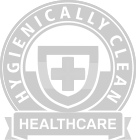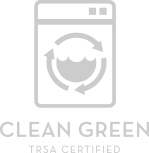Infection Prevention and Control Challenges are on the Rise: Here’s What You Can Do About It
Every year, the Joint Commission releases a list of the ten most important standards for ambulatory healthcare organizations. For the just-released 2017 list, there’s a newcomer: infection prevention and control.
Despite lower numbers overall in healthcare-acquired infections, it’s clear that infection prevention and control is still a huge issue in the medical industry. So, it may be time to reassess some of the key areas where contamination occurs and what your medical facility could be doing better. Here are some questions about infection prevention and control in your healthcare facility that you should definitely be asking:
1. Is my staff practicing proper handwashing procedure?
If your staff isn’t washing their hands at the right times, or worse, not washing their hands at all, then you’re putting your patients at risk. Healthcare professionals who are at a higher risk for poor hand hygiene tend to be men, physicians, nursing assistants and ICU workers. Some self-reported issues that lead to poor hand hygiene are inconvenient sink locations, lack of soap and paper towels, irritation and dryness of the hands, lack of time and forgetfulness.
2. Is my staff wearing PPE when they should be?
PPE, or personal protective equipment, can help keep your staff and other patients from getting infected. Here are a few guidelines from the CDC regarding when PPE should be worn:
- Gloves should be used when coming into contact with blood, bodily fluids and other contaminated items, and while touching mucus membranes and nonintact skin
- Gowns should be used during procedures when blood or bodily fluids are expected to contact the wearer’s clothing or exposed skin
- Masks, goggles or face shields should be worn during patient care that could generate splashes or sprays of blood/bodily fluids
3. Is my staff adhering to good cough and respiratory hygiene guidelines?
If your employees are coughing all over your patients, you’re putting them at a higher risk for infection. To practice good respiratory hygiene, your staff should cover their mouths with a tissue when coughing or sneezing, dispose of the tissue immediately in a proper waste receptacle, then wash their hands.
4. Is my medical facility being cleaned properly?
That includes all medical equipment. To make sure that you’re following the correct procedure for disinfecting your building and equipment, check out this guideline from the CDC on environmental infection control and this one on disinfection and sterilization.
5. Is my staff handling textiles and laundry correctly?
Hospital linens often carry bodily fluids and all of the dangerous bacteria that comes with them. To make sure that your linens aren’t contributing to healthcare-acquired infections, make sure you’re working with a medical laundry service that knows how to truly disinfect and sanitize your linens. Also, train your medical staff on the correct way to handle and conserve contaminated textiles.
HandCraft is a Hygienically Clean-certified laundry facility, which means that we’ve passed the highest industry standards when it comes to processing medical textiles that help medical facilities meet their infection prevention and control goals. Contact us today to learn more about our services!





